We are all familiar with rainbows and probably have seen many in our lifetime. But what is the biblical meaning of rainbows?
Sometimes, if we are fortunate, we can spot a double rainbow if we look closely. So what is the biblical meaning and significance of a rainbow and a secondary rainbow?
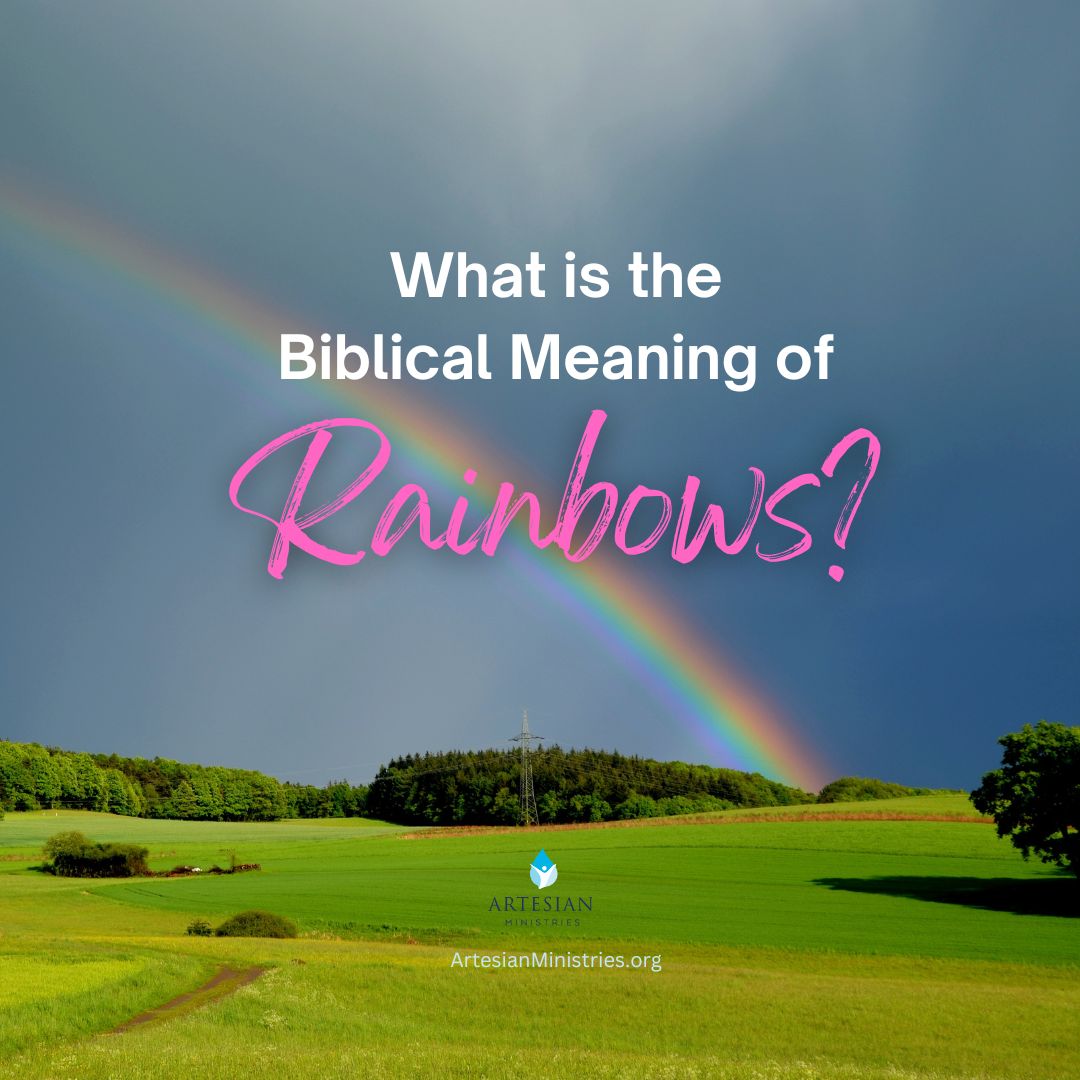
Contents
What is a Rainbow?
What Does the Bible Say About Rainbows?
When Does a Double Rainbow Occur?
Does the Bible Mention Double Rainbows?
Cultural Beliefs About Double Rainbows
What is a Rainbow?
The scientific explanation of a rainbow is simple. Rainbows are caused by reflection, refraction, and dispersion of light in water droplets resulting in a spectrum of light appearing in the sky. It takes the form of a multicolored circular arc.
Rainbows caused by sunlight always appear in the section of the sky directly opposite the sun. Two elements are required for a single rainbow to appear: light and water.
The most common time for the appearance of a rainbow is right after a rainstorm. When the sun comes out after the storm is the best chance of spotting a primary rainbow.
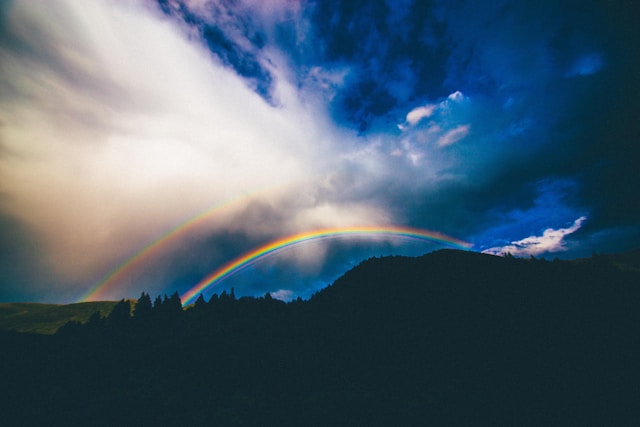
What Does the Bible Say About Rainbows?
The first time a rainbow appears in Scripture is in the story of Noah.
God had caused a great flood to wipe out every living creature on the face of the Earth except for those safe aboard the ark.
The biblical meaning of rainbows is precisely set forth in Genesis 9.
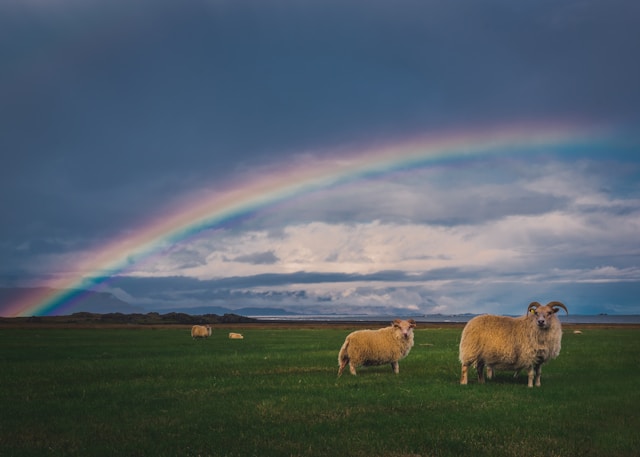
1. When the First Rainbow Appeared in the Bible
After spending approximately one year on the ark, God caused the waters to subside. Noah and his sons and their wives were finally able to disembark on dry land. That’s when God made a covenant with Noah.
“And God said, ‘This is the sign of the covenant that I make between me and you and every living creature that is with you, for all future generations: I have set my bow in the cloud, and it shall be a sign of the covenant between me and the earth.‘” (Genesis 9:12-13).
God’s bow in the clouds is the visible reminder of God’s covenant with mankind. It is a symbol of hope to all living things that God’s promise is trustworthy.
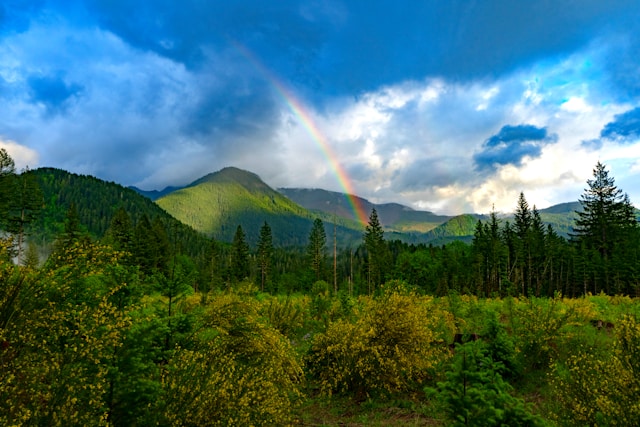
2. Rainbows are God’s Holy Reminder
God does not have a faulty memory. However, mankind does. So rainbows are a sign of hope that the flooding we endure after a storm will never bring about an end to the physical world.
“When I bring clouds over the earth and the bow is seen in the clouds, I will remember my covenant that is between me and you and every living creature of all flesh. And the waters shall never again become a flood to destroy all flesh” (Genesis 9:14-15).
God’s covenant does not mean that storms will never come. He simply sets a rainbow in the clouds as a powerful symbol and good omen of His unfailing love. And God has kept His covenant promise to us to this day.
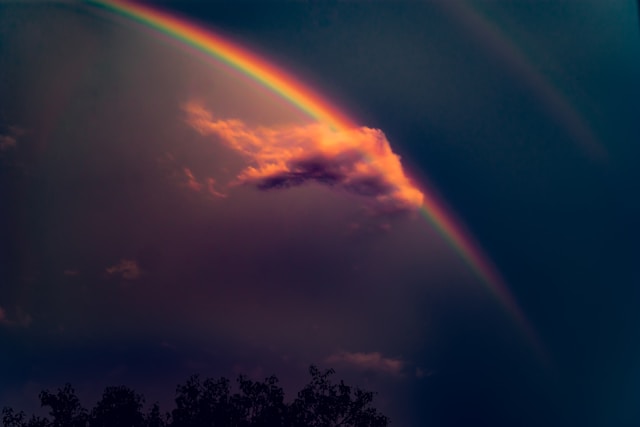
3. Spiritual Significance of Rainbows
Different cultures around the world talk about various meanings of rainbows. Some believe a pot of gold waits at the end of the rainbow. Some believe that it is merely a natural phenomenon of mixing refracted light and water droplets.
However, Christians believe that a rainbow contains more than symbolic meanings. The biblical meaning of rainbows represents God’s covenant that the earth will never again be utterly destroyed by a flood.
Rainbows represent better days ahead beyond the storms of life. It is not merely a symbol of God, but a message of God to His people for new beginnings despite our failures.
The Book of Genesis, chapter 9, contains numerous Bible verses about rainbows and their meaning in the spiritual realm.
“When the bow is in the clouds, I will see it and remember the everlasting covenant between God and every living creature of all flesh that is on the earth.” God said to Noah, “This is the sign of the covenant that I have established between me and all flesh that is on the earth” (Genesis 9:16-17).

When Does a Double Rainbow Occur?
According to the University of Wisconsin, the classic rainbow is a single, bright, colored arc. Red is the outermost color of this arc, and violet is always the innermost color.
On occasion, you may have seen two rainbows at once. The lower rainbow is the primary rainbow and the higher, fainter, colored arc is the secondary rainbow. The color sequence of the secondary rainbow is opposite to the primary; red is on the inside of the arc and violet on the outside.
The separation of colors is referred to as dispersion. Not only prisms but also water drops and ice crystals can cause dispersion. To form a rainbow you need large drops of water, the sun at your back and at the correct angle.
Raindrops act as prisms, bending and reflecting the sunlight that falls on them, just like a crystal hung in a sunny window.
Sometimes the light reflects twice off the back of the raindrop which leads to a secondary rainbow. The second reflection causes the order of the colors in the bow to reverse.
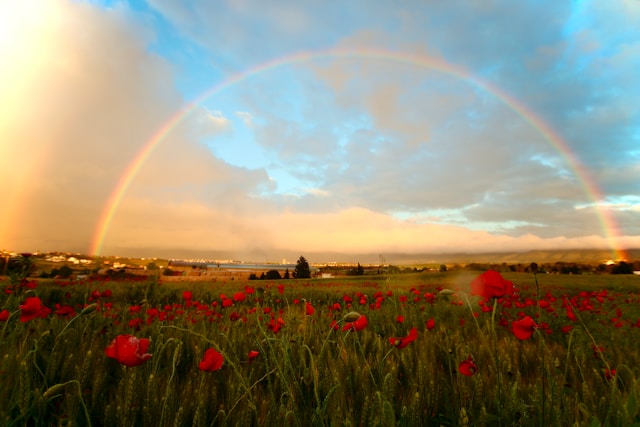
Does the Bible Mention Double Rainbows?
Though many theories exist about the spiritual meaning of the appearance of a double rainbow, a double rainbow is not mentioned in Scripture.
Other than Genesis 9, the only other place where the Bible mentions rainbows is in the Book of Revelation.
“And he who sat there had the appearance of jasper and carnelian, and around the throne was a rainbow that had the appearance of an emerald” (Revelation 4:3).
In Revelation 4:3, the rainbow is emblematic of the fact that, in the exercise of God’s absolute sovereignty and perfect counsels, He will remember His covenant concerning the earth. (Vine’s Complete Expository Dictionary, p. 505)
One other place in Revelation mentions a rainbow: “Then I saw another mighty angel coming down from heaven, wrapped in a cloud, with a rainbow over his head, and his face was like the sun, and his legs like pillars of fire” (Revelation 10:1).
Here the rainbow rests upon the head of an angel who declares that “there shall be delay no longer” (Revelation 10:6) and suggests a connection with the scene in Revelation 4:3 that the mercy to be shown to the earth must be preceded by the execution of divine judgments upon the nations who defy God and His Christ. (Vine’s Complete Expository Dictionary, p. 505)
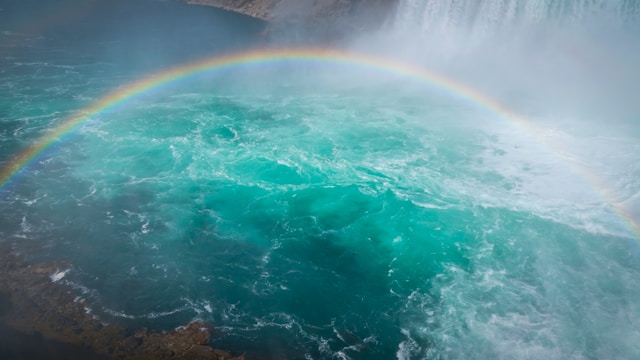
Cultural Beliefs About Double Rainbows
Through the millennia, various cultures have connected rainbows to the spirit world. Ranging from symbols of hope to a sign of good fortune, a double rainbow served as a time to pause and notice the divine.
1. Native American Cultures
Various Native American tribes ascribe different meanings to the natural phenomena of rainbows and double rainbows.
The Navajo believe that the rainbow is a pathway between the physical and spiritual worlds, and is a sign of the Creator’s presence. This belief is perhaps the closest to the actual biblical meaning of rainbows.
In Lakota tradition, rainbows are considered to be the path of the spirit world, and they’re associated with the Thunder Beings, who they believe are powerful and benevolent beings.
The Cherokee believe that the rainbow forms the hem of the sun’s coat. Isn’t that a beautiful imagery? The next time I see a rainbow, I will have to see if it looks like the sun’s hem.
“Warriors of the rainbow” is a prophecy told by many cultures including Cree, Navajo, Hopi, Salish, Zuni and the Cherokee. “There will come a day when people of all races, colors, and creeds will put aside their differences. They will come together in love, joining hands in unification, to heal the Earth and all her children. They will move over the Earth like a great Whirling Rainbow, bringing peace, understanding and healing everywhere they go.”

2. Mythology About Rainbows
The Irish tradition of a pot of gold at the end of every rainbow is certainly not the oldest rainbow myth, but it may be the most pervasive in Western culture. You’re almost certainly familiar with the particulars: a wealth of riches is stored at the end of every rainbow, which is carefully guarded by a leprechaun.
In ancient Greek mythology, rainbows were the personification of the goddess Iris. She was a messenger in ancient Greece between Heaven and Earth, hence the representation of how the rainbow hangs between the two. In Homer’s epic the Iliad, Iris was a winged creature who specifically served as the messenger of Zeus. Her presence was always looked upon as a sign of hope.
In the Chinese culture, the dragon is synonymous with the rainbow as both dwell in the sky between heaven and earth. The word “hong” in Chinese means “rainbow,” and its character is drawn as a two-headed dragon with an arch in the middle that’s very reminiscent of a rainbow.
In Norse myth, Eddic Bifröst is a rainbow bridge built by gods, leading to their home in Asgard. Heimdallr, with his Gjallarhorn (“yelling horn”) stands guard at the place where the flaming rainbow bridge meets the clouds.

Bottom Line
Despite mankind’s mythology and cultural lenses, a rainbow is not a sign of good luck or a directional signal about our love life.
The Bible is clear. The biblical meaning of rainbows is that God alone creates them as an everlasting reminder of His covenant promise. They are a sign of God’s faithfulness to His people to never again destroy all living things with a devastating flood.
There is not any spiritual meaning of a double or second rainbow, other than perhaps God simply wants to delight us.
So every time you see a rainbow, it is a beautiful reminder that God is still on His throne and His covenant promises stand firm for all eternity. And that is real life good news every single day.
Related Posts:
- Best Bible Reading Plans
- Warriors in the Bible: 13 Essential Life Lessons to Learn
- 50 Motivational Bible Verses About Aging Gracefully
About the Author
Donna is a sought-after speaker, multi-published author, and Bible teacher. Her path from being unchurched to becoming passionate about sharing Jesus was not easy. Read about her God-breathed journey: “From Unchurched to Becoming a Multi-Published Author and Sought-After Speaker.” If you want to send Donna a quick message, then visit her here.
{Some of these links are affiliate links. This means if you purchase through that link, the ministry may receive a small commission at no cost to you.}
